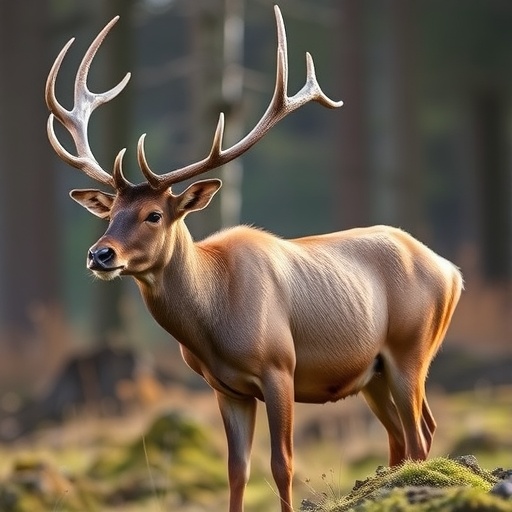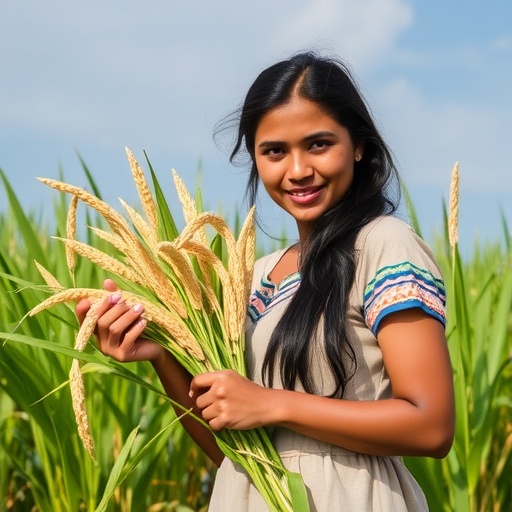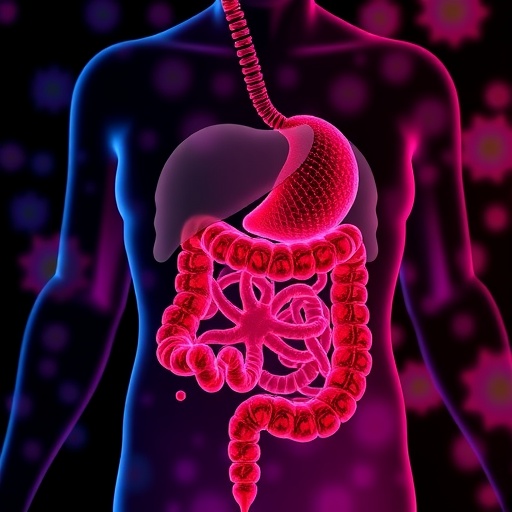
In a groundbreaking study, researchers explored the response of North American elk to experimental inoculation with the SARS-CoV-2 virus, the pathogen responsible for the COVID-19 pandemic. This research seeks to illuminate how wildlife populations, particularly large ungulates, may react at the transcriptional level to viral challenges, potentially providing insights into zoonotic transmission pathways and the evolution of host responses to such viral infections.
SARS-CoV-2 has predominantly impacted human health since it was identified in late 2019. However, its ability to infect various animal species has raised alarms among scientists and wildlife management authorities. This study, carried out by a team led by Petry and colleagues, specifically examined the transcriptional changes in peripheral blood samples from elk cows and their calves after exposure to the virus, shedding light on the intricate viral-host interactions that could influence transmission dynamics.
The researchers closely monitored the elk after administering experimental inoculation, observing their behavioral and physiological responses. Previous studies have hinted at the potential for wildlife to serve as reservoirs for SARS-CoV-2, making it imperative to unravel how these animals react to infection. This research is not merely an academic pursuit; it carries significant implications for public health and wildlife management, particularly as the pandemic landscape continues to evolve.
Transcriptional responses were measured using advanced genomic techniques, enabling the researchers to identify specific genes that were activated or suppressed in response to the viral inoculation. Such molecular insights are vital as they may reveal how elk immune systems react to viral threats and how these responses could impact the overall health of wildlife populations and their ecosystems.
Of particular interest was the role of cytokines and other immune markers that indicate inflammatory responses. Elk, being a key species within many North American ecosystems, play an essential role in maintaining ecological balance. Understanding their immune responses to infectious agents like SARS-CoV-2 is crucial for wildlife conservation strategies and managing potential spillover events from wildlife to domestic animals and humans.
The findings reported in their article provide valuable data on the immune mechanisms engaged by elk when faced with SARS-CoV-2. The altered transcriptional profiles exhibited post-inoculation underscore the adaptability of elk physiology in response to viral threats. By assessing these changes, the study offers evidence that could inform vaccination strategies or even help develop effective wildlife health surveillance programs.
Moreover, this research contributes to the larger body of work concerning the ecology of zoonotic diseases. Scientists have long been aware of the complex interplay between wildlife and pathogens, but the emergence of COVID-19 has intensified the focus on understanding these relationships. Elk, being ungulates often found near human settlements, present a unique case study in how wildlife can bridge the gap between natural ecosystems and urbanized environments.
An essential factor in this study was the careful selection of both elk cows and calves, ensuring that the research captured the differences in immune responses across age groups. Adult elk may exhibit different transcriptional responses compared to younger individuals, potentially influencing their survival and reproductive success in a viral outbreak scenario. By encompassing both demographics, the research team could draw more comprehensive conclusions about the overall health risks posed by SARS-CoV-2 to elk populations.
This work is also pivotal in establishing a framework for future research on wildlife hosts of SARS-CoV-2. By understanding the nuanced responses of elk, scientists can branch out to study other wildlife species. The insights gained can be instrumental in modeling how diverse animal populations across the globe might respond to viral infections, thereby informing a more expansive wildlife health monitoring system.
As wildlife researchers continue to investigate the implications of SARS-CoV-2, the need for cross-disciplinary collaboration becomes increasingly apparent. This study exemplifies the convergence of wildlife biology, virology, and ecological health, emphasizing that comprehensive solutions to zoonotic diseases require a multidisciplinary approach. It engages various stakeholders from wildlife conservationists to public health officials in understanding the urgent need for wildlife health surveillance.
In light of these findings, it is evident that monitoring wildlife populations for viral infections is not only necessary for preserving animal health but also crucial for public health safety. Establishing comprehensive surveillance programs could help detect outbreaks early in reservoir species, allowing for timely interventions that could curb potential spillover incidents to humans.
The research by Petry and colleagues opens a critical dialogue on the intersection of wildlife health, ecological integrity, and public health. The outcomes of their study serve as a call to action for ongoing research efforts to monitor and mitigate the risks posed by emerging infectious diseases in wildlife, particularly in the context of an evolving global health crisis.
As scientists glean more information from studies on wildlife responses to pathogens such as SARS-CoV-2, the hope is that such efforts can lead to better health outcomes not only for wildlife but also for humans. The interconnectedness of our ecosystems underscores the necessity to safeguard wildlife, thus maintaining a balance that can protect both animal and human populations in the face of future pandemics.
The research reported by Petry et al. has created a template for future explorations into the responses of other wildlife species to viral infections, paving the way for further studies that could unravel the complex relationships within ecosystems faced with health threats. The continuous exploration of wildlife immunology will maintain its relevance as we confront the challenges posed by zoonotic diseases in the future.
As we look forward to further advancements in wildlife health research, it is crucial to recognize the vital role that species such as the North American elk play in our understanding of viral behaviors and host responses. The path to unraveling the intricate interactions between humans, animals, and pathogens demands ongoing commitment and innovative scientific inquiry.
The ultimate goal of such studies is not just academic knowledge but the practical application of findings toward strategies that can mitigate the risks posed by zoonotic pathogens. The interplay of wildlife conservation, public health policy, and ecological sustainability forms a triad of considerations that researchers must navigate as they seek to protect both wildlife and human populations.
Subject of Research: The transcriptional responses of North American elk to SARS-CoV-2 inoculation.
Article Title: Peripheral transcriptional responses to experimental SARS-CoV-2 inoculation in North American elk cows and calves.
Article References:
Petry, B., Davila, K.M.S., Buckley, A.C. et al. Peripheral transcriptional responses to experimental SARS-CoV-2 inoculation in North American elk cows and calves.
BMC Genomics 26, 781 (2025). https://doi.org/10.1186/s12864-025-11956-5
Image Credits: AI Generated
DOI:
Keywords: SARS-CoV-2, North American elk, immunology, viral transmission, zoonotic diseases, wildlife health.
Tags: behavioral responses of elk to viral infectionElk immune responses to SARS-CoV-2experimental SARS-CoV-2 inoculation in wildlifehost responses to viral infections in ungulatesimplications for public health and wildlife managementNorth American elk and viral challengesphysiological responses in elk to SARS-CoV-2research on SARS-CoV-2 in animals.transcriptional changes in elkviral-host interactions in wildlifewildlife reservoirs for COVID-19zoonotic transmission pathways




